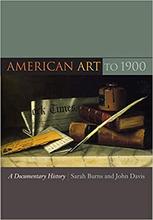More about Nocturne, Blue and Silver: Battersea Reach
- All
- Info
- Shop

Contributor
Whistler's Nocturnes, his series of night paintings, are a major source of interest to writers and artists.
However, this particular member of the series, entitled Nocturne, Blue and Silver: Battersea Reach, is not nearly as famous as his other nocturnes, with few writers specifically mentioning it as an individual work within the Nocturnes series. The series, beginning in 1866, "has been treated [by writers and artists] in great detail, often to the exclusion of all else Whistlerian."
The "reach" in the title is not the "reach" Whistler made to convince the public that the painting was actually art, and not just a lazy and haphazard dump of gray paint on a canvas, nor does it refer to a basketball player's "wingspan." The word "reach" in the name of the painting names a continuous expanse of water surrounding Battersea, London. Whether the tendency to overlook Blue and Silver: Battersea Reach is due to a lack of aesthetic quality or other factors, it is most viable to analyze the work as a minor part of the Nocturnes series and the entire nocturnal art movement, whose most famous exponents, at the time, were Whistler and his friend, John Atkinson Grimshaw. They loved the nightlife. Perhaps it could also be said, then, that they loved to boogie.
Whistler was so enamored of the nocturnal idiom that he used various shades of gray in his interior design work in his house, coordinating a "subtle interrelationship which linked one room with the next in an extremely delicate manner…" He wasn't involved in one of our favorite houses, Grey Gardens, but his color was.
The extreme obscurity of the field of Nocturne, Blue and Silver: Battersea Reach indicates a precursor to the work of Ad Reinhardt and to Andy Warhol's film Empire, which is eight hours of black and white, unmoving footage of the Empire State Building. It's quite popular to criticize Reinhardt for making paintings that supposedly don't have enough colors, or images, to qualify as art. Whistler's work, like that of later artists, angered many critics, to the extent that Whistler actually sued the writer John Ruskin for his dismissive response to a Whistler piece. Whistler used the title and context of representational painting to introduce a higher level of abstraction to his practice. "He never became as abstract as Joseph M.W. Turner, whose work he curiously did not admire, but he agreed with his French friends, Baudelaire particularly, that for the artist 'it is not a matter of copying but of interpreting in a simpler more luminous language.'" Whistler's images of the Thames drew an influence from Baudelaire's On the Heroism of Modern Life, which encouraged artists to find their inspiration in contemporary city environments. Baudelaire expressed appreciation for Whistler's work around the same time.
Sources
- Bendix, Deanna Marohn. James McNeill Whistler as a Designer: Interiors and Exhibitions 2. Minneapolis: University of Minnesota, 1992.
- "The Correspondence of James McNeill Whistler." University of Glasgow, https://www.whistler.arts.gla.ac.uk/correspondence/people/biog/?bid=Bau….
- Fortier, Eugenie B. "A Pivotal Point: James McNeill Whistler’s Harmony in Blue and Silver: Trouville and the Formation of his Aesthetic." CUNY Academic Works, 2019, https://academicworks.cuny.edu/hc_sas_etds/454.
- Green, Ronald. Nothing Matters: a book about nothing. Winchester, UK: iff Books, 2011.
- Merrill, Linda. "Catalogue." In After Whistler: The Artist and His Influence on American Painting, edited by Linda Merrill, et al., 97-255. New Haven, CT: Yale University Press, 2003.
- Taylor, Hilary. James McNeill Whistler. London: Studio Vista, 1978.
- Walker, John. James McNeill Whistler. New York: H.N. Abrams, 1987.













